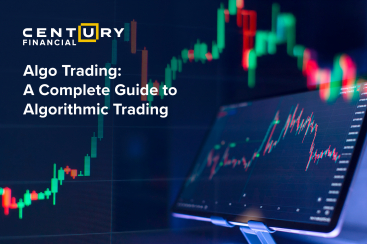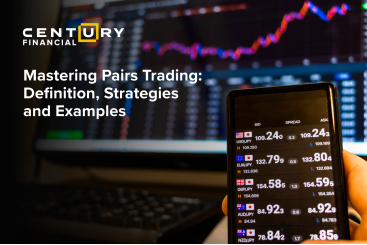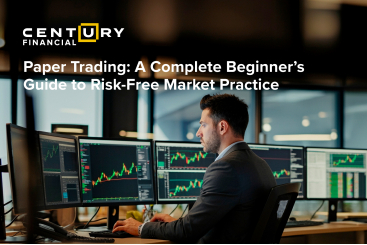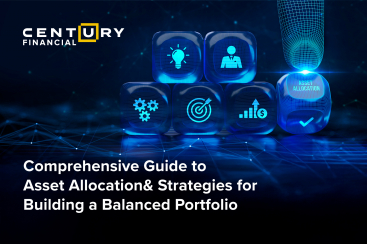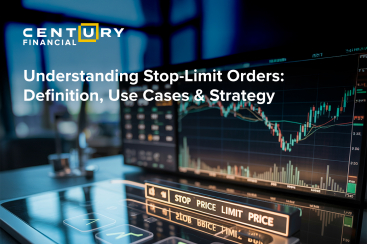Tuesday, May 07, 2024
How to Find Undervalued Stocks: A Step-by-Step Guide
تم إعداد هذا المنشور من قبل سنشري للاستشارات


Synopsis:
This short article will show you how to find discounted stocks. It will also help you acquire fundamental analytical skills to uncover an exciting investing concept. Practical tactics to identify undervalued stocks will give you the confidence to select better stocks for your portfolio.
Consider this scenario: You're shopping for a garment, and you come across one that's 60% off its regular price. Naturally, you'd be thrilled with the value you're getting.
Now, replace the garment with stocks; the only difference is that you won’t see any advertised sales, and the share price might rise or fall in the future compared to its current price.
Undervalued stocks are stocks trading lower than their actual intrinsic value. The art lies in identifying the undervalued share from the list of stocks available in the stock market.
Not to worry
Using a mix of Quantitative and Qualitative Measures can help you find the potential undervalued stock.
Quantitative Analysis
Quantitative Analysis involves using mathematical and statistical techniques to analyse financial data. Some metrics you can check are:
///////////////////////////| Particulars | Defination | Formula |
| Price-to-Earnings Ratio (P/E) |
The price-to-earnings (P/E) ratio measures a company's share price relative to its earnings per share (EPS) and helps assess the relative value of its stock. P/E ratios are most valuable when comparing similar companies in the same industry or for a single company over time. |
P/E Ratio = Market value per share / Earnings per share A high P/E ratio could mean a company's stock is overvalued or investors expect high growth rates. |
| Price-to-Book Ratio (P/B) |
This ratio is calculated by dividing the company's current stock price per share by its book value per share (BVPS). It reflects the value market participants attach to a company's equity relative to its book value. |
P/B Ratio = Market Price per Share / Book Value per Share Value investors typically consider P/B ratios under 1.0 solid investments. A good P/B ratio is relative to a business and its industry. |
| Dividend Yield |
The dividend yield—displayed as a percentage—is the amount of money a company pays shareholders for owning a share of its stock divided by its current stock price. |
Dividend Yield = Annual Dividends Per Share / Price Per Share |
| PEG ratio | A PEG ratio takes the P/E ratio and factors in the stock’s expected earnings growth. A low PEG ratio and strong earnings may indicate an undervalued stock. |
P/E ratio / EPS growth rate A PEG lower than 1.0 is best, suggesting a company is relatively undervalued. |
| Free Cash Flow | Free cash flow (FCF) represents a company's cash generated after accounting for cash outflows to support operations and maintain its capital assets. Looking at FCF is also helpful for potential shareholders or lenders who want to evaluate how likely the company will be able to pay its expected dividends or interest. |
|
Qualitative Analysis
Qualitative analysis in business subjectively assesses a company's value using non-quantifiable factors like management, industry trends, R&D, and labour relations. Some metrics you can check are:
.png)
The rate of return for gold investments fluctuated significantly from 2002 to 2023 but generated positive returns in most years of the observed period. The return on gold as an investment reached almost 25 per cent in 2020, and the annual average price of gold increased overall since 2015.
Why are gold prices increasing?
Here are some reasons for the rise:
Reason 1: Central-Bank Buying
The People’s Bank of China added 12 tons to its gold reserves, now totaling 2,257 tons, while the Reserve Bank of India's holdings reached 817 tons with a 6-ton increase. These actions reflect a broader trend in China, where rising gold demand, driven by the central bank's significant purchases and a growing interest among young Chinese, is impacting global gold prices.

Ever since Russia's invasion of Ukraine and the subsequent weaponisation of the U.S. dollar against Russia, many emerging countries have seen firsthand that the safety and availability of their U.S. dollar assets are dependent on America's goodwill and can be taken away overnight.
This has caused a massive rethink regarding how countries should transact in international markets. To avoid potential sanctions and protect their interests, a consortium of emerging market countries led by Russia and China is setting up an alternative to the U.S. dollar, backed by gold.
We can observe this emerging market demand for gold indirectly via the premium of gold prices in China compared to other parts of the world. When this premium is high, it is more attractive for producers to ship their gold production to China. This premium has surged to all-time highs in recent months as there appears to be an insatiable and urgent demand for gold.
Reason 2: Interest Rate Cut Expectation by the Fed
Overall, gold benefits from investor confidence about US monetary policy and expectations of reduced interest rates.
In March, Federal Reserve Chair Jerome Powell clarified that interest rate reductions are conceivable "at some point this year" if the economy evolves as predicted and inflation continues to fall. Typically, gold prices climb when interest rates decrease, which may occur sooner than some economists predicted.
The CME Group's FedWatch Tool predicts that the central bank will lower its federal effective funds rate by 25-bps at its June meeting. This might continue to drive gold prices higher throughout the second half of the year.
.png)
Reason 3: Geopolitical tensions and hedge against Inflation
Rising geopolitical tensions in the Middle East and Eastern Europe are disrupting global commodity markets, pushing up prices of precious metals like gold and crude oil. This instability makes gold a sought-after investment for stability. Additionally, as a hedge against inflation, gold retains value when traditional currencies falter, attracting investors aiming to protect their assets amidst ongoing economic inflation, further driving up its price.
.png)
Reason 4: Fall in Dollar Index
The link between the price of gold and the US Dollar Index (DXY) is generally inverse, which means that when one rises, the other falls, and vice versa. The Dollar Index has declined in recent months. In March, it even reached 102.5.
.png)
But why is there an inverse relationship? Let us understand.
Gold is priced in US dollars on worldwide markets. Gold prices fall in dollar terms when the US dollar increases versus other currencies. Conversely, as the US dollar falls, the price of gold rises. This link exists because a stronger dollar makes gold more costly for holders of other currencies, resulting in less demand and lower prices, while a weaker dollar makes gold comparatively cheaper and stimulates demand, causing prices to rise.
Effect of Gold Price Increase
Rise in gold prices has a different impact on different sectors of the economy. Let us look at different areas:

Investors:
Positive for Gold Investors: Investors holding gold or gold-related assets (like gold ETFs, stocks of mining companies) typically see an increase in the value of their investments.
Diversification: Higher gold prices can attract more investors seeking to diversify their portfolios, especially during times of economic uncertainty or market volatility.
Consumers:
Increased Cost of Jewelry and Goods: Consumers purchasing gold jewelry or products will face higher prices, which might reduce demand for non-investment gold items.
Impact on Cultural Practices: In cultures where gold is an integral part of ceremonies (like weddings in India), increased prices can affect household budgets and spending patterns.


Economy:
Inflation Indicator: Rising gold prices are often seen as an indicator of inflation, which can influence central bank policies and interest rates.
Trade Balance and Currency Valuation: When gold prices rise, countries exporting gold or with substantial gold reserves typically see their currency strengthen due to the increased value of their exports. Conversely, countries importing more gold may experience a decrease in their currency's value, as higher gold exports generally boost a nation's currency value.
Future Outlook for Gold Prices ?
The gold price has been on the rise. It is expected to increase further. However, it is essential to note that a complex interplay of various factors influences gold prices, and prices can be volatile in response to changes in these factors. As a result, predicting gold price movements in the short term can be challenging.
Do you have Gold in your portfolio?
Do not miss the opportunity to strengthen your portfolio.
Start trading on the Century Trader App now.
لا تقدم شركة سنشري للإستشارات والتحليل المالي ش.ذ.م.م (الشركة) محتوى هذه المدونة، بما في ذلك أي أبحاث أو تحليلات أو آراء أو توقعات أو أي معلومات أخرى (يُشار إليها مجتمعةً باسم "المعلومات")، إلا لأغراض التسويق والتثقيف وإتاحة المعلومات العامة. ولا يُفسَّر ذلك على أنه نصيحة استثمارية أو توصية أو دعوة لشراء أو بيع أي أدوات مالية.
كما يجوز نشر هذه المعلومات عبر قنوات مختلفة، بما في ذلك موقع الشركة الإلكتروني، ومنصات الغير، والنشرات الإخبارية، والمواد التسويقية، ورسائل البريد الإلكتروني، ووسائل التواصل الاجتماعي، وتطبيقات المراسلة، والندوات الإلكترونية، وغيرها من وسائل التواصل. وبينما تسعى الشركة لضمان دقة المحتوى، فإنها لا تضمن اكتماله أو موثوقيته أو تحديثه في الوقت المناسب. وعليه، فأي قرارات تُتخذ بناءً على هذه المعلومات تكون على مسؤوليتك الشخصية. ولا تتحمل الشركة أي مسؤولية عن أي خسارة أو ضرر ناتج عن استخدامها.
ينطوي تداول المنتجات المالية على مخاطر كبيرة، بما لا يتناسب مع جميع المستثمرين. فيُرجى التأكد من وعيك التام بالمخاطر، وطلب الاستشارة المهنية المتخصصة إذا لزم الأمر.
يُرجى الاطلاع على بيان كشف المخاطر الشامل المتوفر على موقعنا الإلكتروني.


